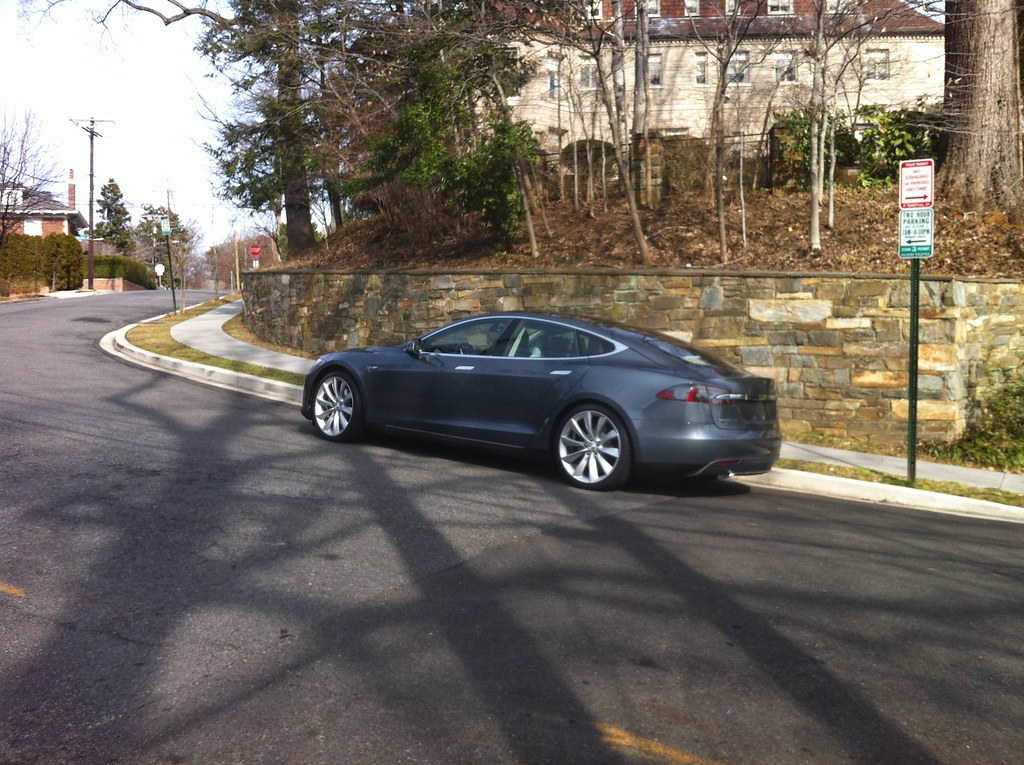
Ah, the 1980s. A decade of excess, innovation, and arguably, some of the most unforgettable automotive creations to ever grace asphalt. It was a time when car designers weren’t afraid to push boundaries, engineers dared to turbocharge everything, and the idea of a car as a statement piece truly took hold. Fast forward a few decades, and those very same machines that defined an era have transitioned from everyday drivers and weekend warriors to coveted collector’s items, fetching prices that would make a rockstar blush.
What is it about these square-edged, often audacious, and sometimes gloriously over-the-top vehicles that captures the hearts and wallets of enthusiasts today? It’s a potent cocktail of factors: limited production runs that make surviving examples genuinely rare, unique styling cues that instantly transport you back to neon lights and synthesizers, and technological advances that, for their time, felt like something out of a sci-fi movie. These aren’t just cars; they’re rolling monuments to a distinctive period in automotive history, each with a story to tell and a legacy to uphold.
And let’s be honest, who better to appreciate such automotive artistry than those who live their lives in the spotlight? Musicians, in particular, have a well-documented penchant for the extraordinary, and their garages often rival their discographies in terms of sheer star power. While we’re about to dive deep into some of the most sought-after four-wheeled gems from the 80s, keep in mind that the spirit of collecting, of owning a piece of mechanical brilliance, is a shared language that transcends the stage and the auction block. So, buckle up, because we’re taking a joyride through the pinnacle of 1980s automotive desirability.
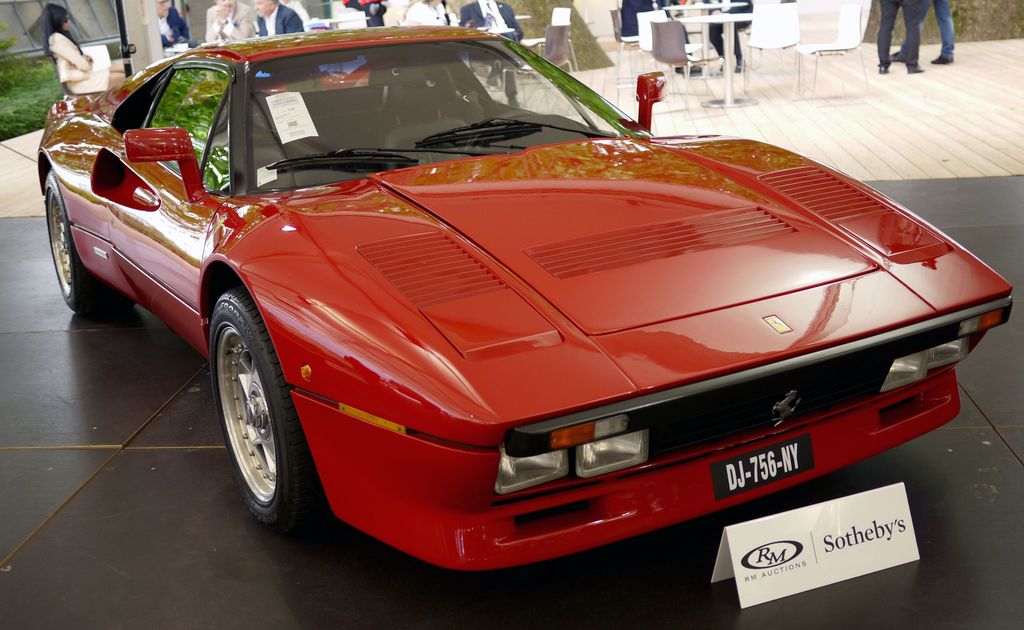
1. **Ferrari 288 GTO**The Ferrari 288 GTO isn’t just an iconic supercar of the 1980s; it’s a homologation special, a street-legal beast born from the wild ambitions of Group B racing. This machine wasn’t merely built for the road; it was engineered to dominate race tracks, a purpose evident in its aggressive styling and advanced engineering. Today, its status has ascended to legendary, widely considered one of the most valuable Ferraris ever to wear the Prancing Horse badge. It’s not just a car; it’s a statement, a testament to what Ferrari could achieve when pushed to the absolute limit.
Its rarity is, without question, the primary driver of its stratospheric value. Ferrari produced a mere 272 units of the 288 GTO, making it an incredibly scarce commodity in the collector world. This extreme scarcity ensures that each surviving example, meticulously preserved or expertly restored, becomes a highly coveted artifact. The limited numbers didn’t just create exclusivity; they ignited a fervor among collectors that has only intensified over the decades, pushing prices ever higher in a market that reveres the unique.
Performance-wise, the 288 GTO was nothing short of groundbreaking for its era. Nestled within its lightweight chassis was a twin-turbo V8 engine, a powerhouse capable of unleashing remarkable grunt, propelling the car to speeds exceeding 180 mph. Beyond sheer velocity, its advanced suspension and finely tuned dynamics contributed to handling characteristics that, even today, can give modern supercars a run for their money. This potent combination of raw power and sophisticated handling makes it a visceral driving experience, maintaining its desirability among those who truly appreciate the art of high-speed motoring.
Then there’s the design. Oh, the design. The GTO’s aggressive lines, prominently flared fenders, and meticulously sculpted aerodynamic features made it an instant visual icon. It was a car that looked fast even when standing still, a testament to Pininfarina’s masterful hand. Critically, this iconic styling has aged with remarkable grace, avoiding the pitfalls of many 80s designs that haven’t stood the test of time. Instead, it has reinforced its status as a timeless piece of automotive art, deeply sought after by those who appreciate both form and function.
Finally, its historical significance deeply solidifies its value. As a homologation special, a car built specifically to meet racing regulations, the 288 GTO represents a pivotal, unique chapter in Ferrari’s storied history. Enthusiasts and serious collectors recognize its importance not just as a rare sports car, but as a tangible piece of motorsport heritage, linking directly to a golden age of racing. When originality is also factored in – matching numbers, authentic parts, and impeccable documentation – it’s clear why the 288 GTO continues to appreciate, a true 1980s treasure.
Car Model Information: 2023 Dodge Charger GT
Name: Ferrari 288 GTO
Aka: Ferrari GTO
Manufacturer: Ferrari
Production: 1984–1987,272 produced
Assembly: Maranello
Designer: Pininfarina,Nicola Materazzi
Class: Sports car
BodyStyle: berlinetta
Layout: Rear mid-engine, rear-wheel-drive layout
Related: Ferrari 308 GTB/GTS
Engine: 2855 cc
Abbr: on (Dry)
Order: Ferrari Dino engine#288 GTO,twin turbo,V8 engine
Powerout: 400 PS
Transmission: Manual transmission
Wheelbase: 2450 mm
Length: 4290 mm
Width: 1910 mm
Height: 1120 mm
Weight: 1160 kg
Predecessor: Ferrari 250 GTO
Successor: Ferrari F40
Sp: uk
Categories: Articles with short description, CS1 Italian-language sources (it), Cars discontinued in 1987, Cars introduced in 1984, Commons category link from Wikidata
Summary: The Ferrari GTO (often referred to as Ferrari 288 GTO) (Type F114) is an exotic homologation version of the Ferrari 308 GTB produced from 1984 until 1987 in Ferrari’s Maranello factory. It was designated GT for Gran Turismo and O for Omologata (homologated in Italian).
Get more information about: Ferrari 288 GTO
Buying a high-performing used car >>>
Brand: Ferrari Model: 288 GTO
Price: $26,690 Mileage: 19,257 mi.
Read more about: Everyone Wants These 14 Classic Cars In Their Garage: A Deep Dive for Enthusiasts

2. **Porsche 911 Carrera 3.2**The Porsche 911 Carrera 3.2 stands as a defining model within the legendary 911 lineage of the 1980s, a true benchmark for what an air-cooled Porsche could be. Produced from 1984 to 1989, this iteration wasn’t about radical reinvention but rather the meticulous refinement of the proven Carrera formula. It masterfully blended potent performance with bulletproof reliability and the timeless, unmistakable styling that has defined Porsche for generations. Today, it’s not just a classic; it’s one of the most fervently sought-after air-cooled 911s on the planet.
Its engineering is a cornerstone of its enduring value and appeal. The heart of the Carrera 3.2 is its robust 3.2-liter flat-six engine, an powerplant renowned for its strong, linear performance and, crucially, its remarkable reliability and ease of maintenance. Enthusiasts aren’t just buying speed; they’re investing in simplicity and robustness, qualities that have allowed countless examples to remain in exceptional condition, defying the march of time and odometer readings, decades after they rolled off the production line.
Rarity, as always, enhances its collectibility. While not as limited in production as some other supercars of the era, specific limited editions, special trims, and, most significantly, impeccably maintained examples, attract buyers willing to pay a substantial premium. Finding models that boast their original factory paint, an unmolested interior, and a comprehensive paper trail of documentation are the holy grail for collectors, pushing their market desirability to the very top.
The styling of the 911 Carrera 3.2 is, quite simply, timeless. Its classic, unmistakable silhouette, those iconic wide fenders, and the distinctive headlights combine to make it instantly recognizable, even to the casual observer. This design hasn’t just aged well; it’s matured into an automotive aesthetic that transcends fleeting trends, retaining both its powerful visual appeal and its robust market value. It’s a design language that speaks volumes about heritage and understated aggression.
Furthermore, its cultural significance plays a vital role in its importance. The 911 Carrera 3.2 wasn’t merely a car; it was a character in popular films, a competitor in thrilling racing events, and a frequent feature in seminal car culture publications. These appearances solidified its reputation as a true performance icon, imprinting it deeply into the collective consciousness of automotive enthusiasts. This sustained exposure and cultural resonance continue to fuel strong demand in the vibrant collector market.
Finally, the raw performance and the inimitable driving experience remain absolutely central to its allure. Enthusiasts cherish the responsive handling, the precise, communicative steering, and the inherently engaging driving dynamics that define the quintessential 911 experience. These intrinsic qualities ensure that the Carrera 3.2 remains profoundly desirable, offering a tactile, analogue connection to the road that is increasingly rare, making it a powerful draw for anyone who truly loves to drive, even decades after its production run ended.
Car Model Information: 2023 Dodge Charger GT
Name: Porsche 911
Caption: The 1 millionth 911 produced on display at Volkswagen Group Forum, Berlin
Designer: Ferdinand Alexander Porsche
Manufacturer: Porsche
Production: September 1964 – present
Assembly: Stuttgart,Baden-Württemberg
Class: Sports car
BodyStyle: unbulleted list
Related: unbulleted list
Layout: Rear-engine design,rear-wheel drive
Predecessor: Porsche 356
Categories: 1970s cars, 1980s cars, 1990s cars, 2+2 coupés, 2000s cars
Summary: The Porsche 911 model series (pronounced Nine Eleven or in German: Neunhundertelf, or colloquially Neunelfer) is a family of two-door, high performance rear-engine sports cars, introduced in September 1964 by Porsche of Stuttgart, Germany, and now in its eighth generation. All 911s have a rear-mounted flat-six engine, and usually 2+2 seating, except for special 2-seater variants. Originally, 911s had air-cooled engines, and torsion bar suspension, but the 911 has been continuously enhanced, and evolved across generations. Though the 911 core concept has remained largely unchanged, water-cooled engines were introduced with the 996 series in 1998, and front and rear suspension have been replaced by Porsche-specific MacPherson suspension up front, and independent multi-link rear suspension.
The 911 has been raced extensively by private and factory teams, in a variety of classes. It is among the most successful competition cars. In the mid-1970s, the naturally aspirated 911 Carrera RSR won world championship races including Targa Florio and the 24 Hours of Daytona. The 911-derived 935 turbo also won the 24 Hours of Le Mans in 1979. Porsche won the World Championship for Makes in 1976, 1977, 1978, and 1979 with 911-derived models.
In a 1999 poll to determine the Car of the Century, the 911 ranked fifth — one of two in the top five that had remained continuously in production (the original Beetle remained in production until 2003). The one millionth example was manufactured in May 2017 and is in the company’s permanent collection.
Get more information about: Porsche 911
Buying a high-performing used car >>>
Brand: Porsche Model: 911 Carrera 3.2
Price: $26,690 Mileage: 19,257 mi.
Read more about: Beyond the Hype: 14 Underrated Sports Cars Every Enthusiast Should Discover
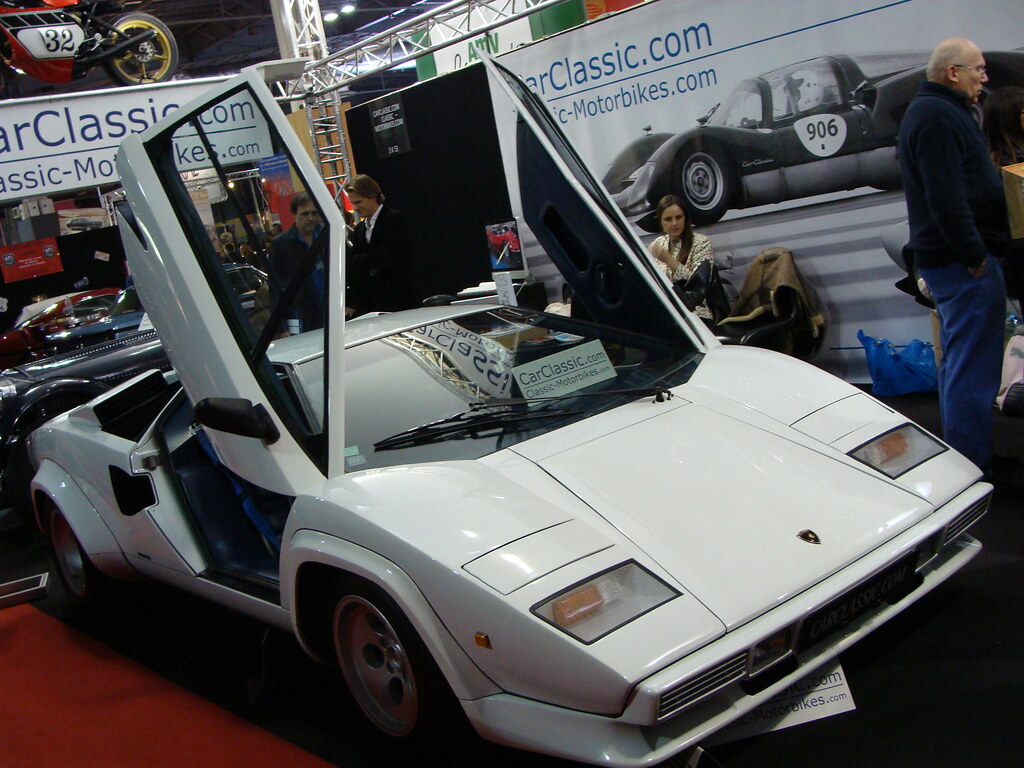
3. **Lamborghini Countach**The Lamborghini Countach. Just uttering the name evokes images of poster-covered bedroom walls and dreams of speed. It is, without a doubt, one of the most legendary supercars to emerge from the 1980s, a decade it unapologetically defined. Instantly recognizable for its impossibly sharp, angular design and those dramatic scissor doors, the Countach wasn’t just a car; it became a vivid, rolling symbol of excess, audacious performance, and Italian flair. Today, its iconic status has only grown, making it highly collectible and commanding truly extraordinary prices on the open market.
Rarity is an undeniable, foundational factor in its enduring allure. While its production numbers weren’t as minuscule as some ultra-limited specials, only a few thousand Countachs were ever produced. What truly sets them apart, however, is that each model year brought subtle variations and evolutions, turning specific examples – particularly early, pure iterations or the later, wilder wings-and-flares versions – into highly sought-after treasures. Collectors fervently prize well-preserved, numbers-matching, or expertly restored cars, knowing that each one contributes to its escalating market value.
The performance characteristics of the Countach, especially for its time, were nothing short of breathtaking and certainly contributed significantly to its desirability. Equipped with a monstrous V12 engine, it delivered savage acceleration and top speeds that were truly exceptional for the era, capable of leaving most other vehicles choking in its wake. This inherent performance pedigree isn’t just a historical footnote; it helps to maintain a fervent enthusiasm among collectors and those who appreciate the sheer spectacle of a truly powerful, untamed machine.
However, it was the design that truly played a crucial, indelible role in its lasting appeal. The Countach’s unmistakable wedge shape, its audacious bold lines, and, of course, those instantly iconic scissor doors, collectively forged a distinctive and surprisingly timeless visual identity. This revolutionary styling didn’t just age well; it transcended its time, remaining instantly recognizable and perpetually inspiring, solidifying its collectible status as an undisputed design masterpiece. It’s a car that still stops traffic, just as it did in its heyday.
Its historical significance provides yet another layer of value. The Countach represents Lamborghini’s most extreme and audacious design experimentation of its time, a defiant middle finger to convention. It wasn’t merely influential; it single-handedly influenced supercar styling for decades to come, setting a template for aggressive, low-slung, and visually arresting machines. Owning a Countach isn’t just about owning a car; it’s about possessing a tangible, exhilarating piece of automotive history, a monument to bold Italian vision.
For serious collectors, originality is paramount and deeply prized within the market. Vehicles that boast matching numbers across their powertrain and chassis, feature authentic, unmolested interiors, and retain their factory paint, command significant premiums. While expert restoration can undoubtedly maintain and even enhance value, absolute originality is often the ultimate, most coveted goal for the most discerning and passionate collectors. This potent combination of rarity, performance, design, and profound historical importance unequivocally cements the Lamborghini Countach as one of the most valuable 1980s cars.
Car Model Information: 1986 Lamborghini Countach LP5000 Quattrovalvole
Name: Lamborghini Countach
Caption: Lamborghini Countach LP5000 QV
Manufacturer: Lamborghini
Production: 1974–1990
Assembly: Sant’Agata Bolognese
Designer: Marcello Gandini
Class: Sports car
BodyStyle: coupe
Layout: Longitudinal engine,mid-engine,rear-wheel-drive
Related: Lamborghini LM002
Engine: Lamborghini V12,V12 engine,LP400, LP400 S: {{cvt,3929,cc,L,1,disp=flip
Transmission: synchromesh,Manual transmission
Wheelbase: 96.46 in
Abbr: on (LP5000QV)
Order: flip
Length: 162.99 in
Width: LP 400: {{cvt,74.28,in,mm,0,abbr=on,order=flip
Height: 42.13 in
Weight: {{convert,1300.5,kg,lb,0,abbr=on
Predecessor: Lamborghini Miura
Successor: Lamborghini Diablo
Doors: Scissor doors
Sp: uk
Categories: 1980s cars, 1990s cars, All articles with unsourced statements, Articles containing Italian-language text, Articles containing Piedmontese-language text
Summary: The Lamborghini Countach ( KOON-tahsh) is a rear mid-engine, rear-wheel-drive sports car produced by the Italian automobile manufacturer Lamborghini from 1974 until 1990. It is one of the many exotic designs developed by Italian design house Bertone, which pioneered and popularized the sharply angled “Italian Wedge” shape.
The wedge style was introduced to the public in 1970 with the Lancia Stratos Zero concept car. The first showing of the Countach prototype was at the 1971 Geneva Motor Show, as the Lamborghini LP500 concept.
The “Countach” nameplate was reused for the Sián-based limited-production hybrid-electric model called the Countach LPI 800-4 in 2021.
Get more information about: Lamborghini Countach
Buying a high-performing used car >>>
Brand: Lamborghini Model: Countach
Price: $674,900 Mileage: 15,743 mi.
Read more about: Classic Cars Skyrocketing in Value: 26 Models Worth Investing In
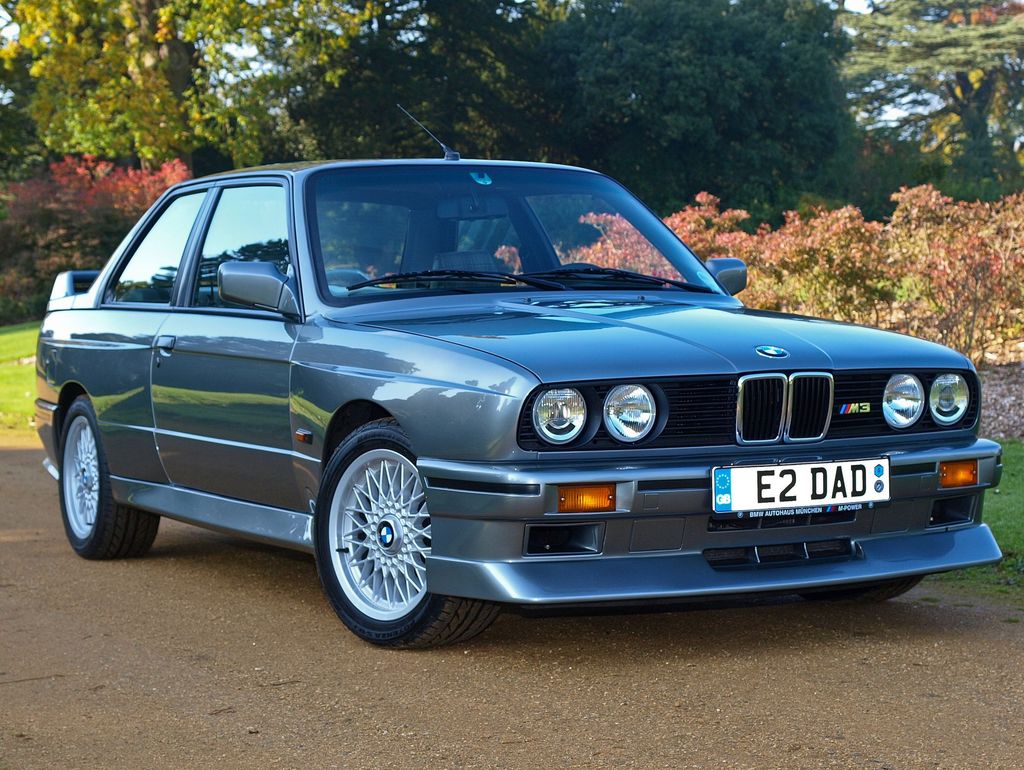
4. **BMW M3 E30**The BMW M3 E30 isn’t just a car; it’s a legend. Introduced in the mid-1980s, this wasn’t just another performance sedan; it was a homologation special, meticulously developed for the fiercely competitive world of touring car racing. The E30 M3 perfectly encapsulated a sublime balance of raw performance, scalpel-sharp handling, and an unexpected degree of reliability, quickly becoming the benchmark for what a driver’s car could be. Today, it proudly stands as one of the most ferociously sought-after 1980s performance cars, a true icon revered by purists and collectors alike.
Its engineering excellence is the bedrock of its lasting and ever-increasing value. At its heart lies a high-revving four-cylinder engine, a marvel of motorsport-derived precision, perfectly complemented by a lightweight chassis and an exquisitely precise suspension design. This symphony of mechanical components delivers an utterly engaging and communicative driving experience, one that remains as compelling and thrilling today as it was nearly four decades ago. It’s a car that begs to be driven, and rewards in spades.
Rarity is a significant factor driving its intense collectibility. While not produced in minuscule numbers, certain trims, such as the coveted Evolution models (Sport Evo, Evolution II), were produced in extremely limited quantities, making them automotive unicorns. Beyond these special editions, impeccably well-maintained examples, particularly those with rare factory options or distinctive, lesser-seen colors, exert an irresistible pull on the market, consistently attracting premium prices from discerning buyers who understand their significance.
The styling of the E30 M3 is, for many, simply timeless. Its distinctive boxy shape, the aggressive, purposeful stance, and those subtle yet effective aerodynamic enhancements – like the flared arches and unique spoiler – perfectly capture the essence of 1980s performance design. Crucially, this aesthetic has aged with remarkable grace, avoiding any period clichés to remain highly recognizable and deeply celebrated within the broader car culture. It’s a design that’s functional, aggressive, and utterly captivating.
Its cultural significance undoubtedly enhances its desirability, carving out a permanent niche in automotive history. The M3 E30 didn’t just compete; it dominated touring car championships across the globe, earning an unassailable reputation for performance and agility. This formidable racing heritage, coupled with countless appearances in automotive publications, fostered a robust, global following among enthusiasts. Its story is intertwined with motorsport glory, amplifying its mystique and desirability.
The pure, unadulterated performance and driving enjoyment remain absolutely central to its enduring appeal. Drivers and collectors alike value its incredibly responsive handling, the direct, communicative steering that tells you everything the road is doing, and its inherently track-capable dynamics. These qualities ensure that the car remains an exciting and utterly visceral experience, a masterclass in analogue driving pleasure, even as decades roll on. It’s a mechanical extension of the driver’s will.
For the serious collector, originality matters deeply in this segment of the market. Vehicles that have maintained their factory specifications, show minimal modifications, and possess a thoroughly documented service history are particularly valuable. These factors not only ensure authenticity but also contribute to the M3 E30 remaining one of the most collectible and undeniably desirable 1980s BMWs, a testament to its enduring legacy as a driver’s machine of unparalleled pedigree.
Car Model Information: 2017 BMW M3 Base
Name: BMW M3
Caption: 2021 BMW M3 Competition (G80)
Manufacturer: BMW M
Production: unbulleted list
Class: Compact executive car
Layout: unbulleted list
Related: unbulleted list
Categories: 1990s cars, 2000s cars, 2010s cars, 2020s cars, All Wikipedia articles written in British English
Summary: The BMW M3 is a high-performance version of the BMW 3 Series, developed by BMW’s in-house motorsport division, BMW M GmbH. M3 models have been produced for every generation of 3 Series since the E30 M3 was introduced in 1986.
The initial model was available in a coupé body style, with a convertible body style made available soon after. M3 saloons were offered initially during the E36 (1994–1999) and E90 (2008–2012) generations. Since 2014, the coupé and convertible models have been rebranded as the 4 Series range, making the high-performance variant the M4. Variants of the 3 Series since then have seen the M3 produced as a saloon, until 2020, when the M3 was produced as an estate (Touring) for the first time, alongside the saloon variant.
Get more information about: BMW M3
Buying a high-performing used car >>>
Brand: BMW Model: M3
Price: $37,999 Mileage: 81,114 mi.
Read more about: Classic Cars Skyrocketing in Value: 26 Models Worth Investing In
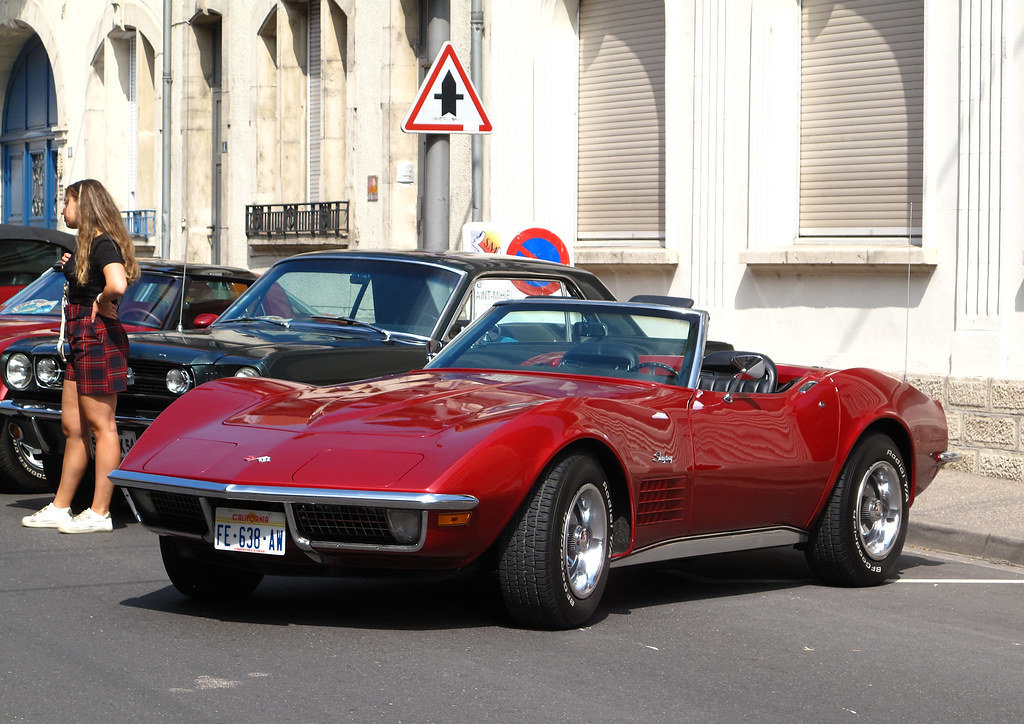
5. **Chevrolet Corvette C4**The Chevrolet Corvette C4, which burst onto the scene in 1984, wasn’t just a new model; it represented a monumental technological leap for America’s most iconic sports car. It was a bold statement, ushering in an era of modernized styling, a revolutionary advanced suspension system, and significantly improved performance that firmly placed it back in contention on the global stage. What was once a contemporary marvel has, over time, matured into an increasingly collectible classic, a tangible bridge between the Corvette’s raw past and its refined future.
Rarity, as is often the case, significantly enhances the value for certain, highly desirable trims. Among these, limited-production variants such as the formidable ZR-1 stand out as particularly sought after by collectors. These weren’t just Corvettes; they were super-Corvettes. Original, exceptionally low-mileage examples, especially of the ZR-1, consistently attract high prices at prestigious auctions and during private sales, representing the pinnacle of C4 collectibility and showcasing an enduring appreciation for American performance innovation.
Performance was a key pillar of its appeal. The C4, especially in its later, more powerful guises, offered strong acceleration and precise, confident handling that could genuinely rival many European sports cars of the era. It presented a driver-focused experience that few American cars could match at the time. The ZR-1, in particular, was a technological tour de force, featuring a highly advanced LT5 V8 engine that set new benchmarks for American engineering, pushing the boundaries of what a domestic sports car could achieve.
The C4’s styling remains unequivocally iconic, a definitive expression of 1980s sports car aesthetics. Its sharp, purposeful angles, those distinctive pop-up headlights, and the sleek, wedge-like silhouette coalesce into a design that is instantly recognizable and deeply nostalgic. Well-maintained examples proudly preserve these defining features, ensuring that their visual appeal remains undimmed and adding substantially to their collectible status as a true design statement from the era.
Technological advancements truly added significant value and cemented the C4’s place in automotive history. Features such as groundbreaking digital dashboards, sophisticated advanced suspension systems (including the revolutionary Z51 package), and a range of performance-oriented engines made the C4 an intriguing and compelling blend of modernity and classic sports car design. Collectors with an eye for innovation and engineering appreciate these forward-thinking traits when evaluating cars for long-term value and historical importance.
For serious buyers, originality and comprehensive documentation dramatically increase desirability. Vehicles that have retained their factory specifications, boast complete and verifiable service records, and feature authentic components consistently command premium prices. Enthusiasts are more than willing to pay for models that retain their untarnished original character, seeing them as pristine capsules of a specific moment in automotive evolution.
The powerful combination of rarity, uncompromising performance, iconic styling, and profound historical significance has collectively transformed the Corvette C4 into a highly collectible 1980s sports car. Its enduring appeal, rooted in its blend of innovation and classic muscle, ensures that well-preserved examples continue to fetch impressive sums, proving that American ingenuity from the 80s can stand proudly among the world’s most desired classics.
Car Model Information: 2023 Dodge Charger GT
Name: Chevrolet Corvette (C4)
Caption: 1994 Chevrolet Corvette
Manufacturer: Chevrolet
Production: January 3, 1983 – June 20, 1996
ModelYears: 1984–1996
Predecessor: Chevrolet Corvette (C3)
Successor: Chevrolet Corvette (C5)
Class: Sports car
Assembly: Bowling Green, Kentucky
BodyStyle: targa top,Convertible (car)
Layout: Front-engine, rear-wheel-drive layout#FMR
Platform: GM Y platform
Wheelbase: cvt
Length: cvt
Width: cvt
Height: Coupe: {{cvt,46.7,in,mm
Transmission: automatic transmission,Overdrive (mechanics),GM 4L60-E transmission,ZF Friedrichshafen
Engine: {{cvt,350,cuin,L,1,Chevrolet small-block engine (first- and second-generation)#L83
Weight: cvt
Designer: Jerry Palmer
Related: Callaway Cars#C4 (RPO B2K Callaway Twin Turbo Corvette),Callaway Cars#C4 (RPO B2K Callaway Twin Turbo Corvette),Callaway Cars#C4 (RPO B2K Callaway Twin Turbo Corvette),Callaway Cars#C6 (Callaway SuperNatural Corvette),Callaway Cars#C4 (RPO B2K Callaway Twin Turbo Corvette)
Categories: 1990s cars, All articles with dead external links, All articles with unsourced statements, Articles with dead external links from November 2016, Articles with permanently dead external links
Summary: The Chevrolet Corvette (C4) is the fourth generation of the Corvette sports car, produced by American automobile manufacturer Chevrolet from 1983 until 1996. The convertible returned, as did higher performance engines, exemplified by the 375 hp (280 kW) LT5 found in the ZR1. In early March 1990, the ZR1 would set new records for the highest average speed over 24 hours at over 175 mph (282 km/h) and highest average speed over 5,000 miles at over 173 mph (278 km/h). With a completely new chassis, modern sleeker styling, and other improvements to the model, prices rose and sales declined. The last C4 was produced on June 20, 1996.
Get more information about: Chevrolet Corvette (C4)
Buying a high-performing used car >>>
Brand: Chevrolet Model: Corvette C4
Price: $26,690 Mileage: 19,257 mi.
Read more about: Recall These? The Ultimate Showdown: 12 Coupes That Went From Hot to Humiliating in the Great American vs. European Car Wars
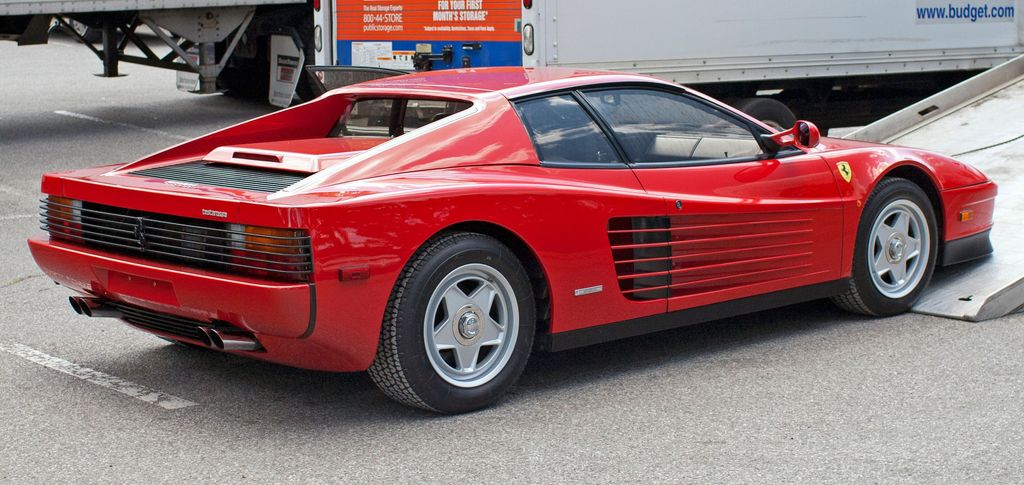
6. **Ferrari Testarossa**The Ferrari Testarossa. Just the name alone conjures visions of Miami Vice, white linen suits, and the unmistakable sound of a flat-12 engine echoing down palm-lined streets. It is, without exaggeration, one of the most iconic supercars of the entire 1980s. Celebrated for its dramatically wide rear, those instantly recognizable side strakes that became a stylistic signature, and its ferociously powerful flat-12 engine, the Testarossa wasn’t just a car; it became a symbol of unbridled automotive extravagance and a cultural icon. Unsurprisingly, it remains profoundly desirable in today’s discerning collector market.
While perhaps produced in larger numbers than some of the hyper-exclusive Ferraris of its era, rarity is still a significant factor in its considerable value. The challenge for collectors lies in finding truly well-maintained, low-mileage examples that haven’t been modified or neglected. The market places a high premium on vehicles that have meticulously preserved their originality, from paint to interior to mechanical components. This pursuit of the unmolested original continues to drive market prices ever upward, reflecting its enduring appeal.
Performance was an area where the Testarossa truly set new, exhilarating standards in the 1980s. Its magnificent flat-12 engine delivered an incredibly smooth yet high-end power delivery, resulting in truly impressive acceleration figures for its time. Beyond raw speed, the mid-engine layout provided inherently excellent handling characteristics, making it an engaging and rewarding car to drive. Even decades later, that blend of effortless power and balanced dynamics ensures the Testarossa remains a thrilling, visceral experience behind the wheel.
Styling is where the Testarossa truly etched its place in history. Those distinctive side strakes, originally designed to channel air to the radiators while adhering to regulations, coupled with its impossibly wide stance and sharp, purposeful angles, unequivocally define its visual identity. This bold, almost architectural design, against all odds, has aged remarkably well. It hasn’t fallen into the trap of becoming dated; instead, it maintains an incredibly strong, commanding presence and unwavering collector appeal, proving that true art transcends time.
Its cultural impact is a colossal contributor to its desirability. The Testarossa wasn’t confined to car magazines; it was a bona fide star, prominently featured in hit films, groundbreaking music videos, and a plethora of popular media. This ubiquitous exposure catapulted it into the collective consciousness, turning it into the definitive symbol of 1980s excess, style, and aspirational luxury. This amplified cultural demand has only served to fuel its status among enthusiasts and those who seek to own a piece of that glamorous decade.
For discerning collectors, originality and comprehensive documentation are paramount and further increase its market value. Cars that boast their factory-original paintwork, feature matching numbers for their critical components, and come with a verified, extensive service history command top-tier prices at both auctions and private sales. These attributes ensure authenticity and provenance, qualities highly prized by those investing in automotive legends.
In essence, for collectors, the Ferrari Testarossa embodies a potent, irresistible combination of searing performance, iconic design, relative rarity, and unparalleled cultural significance. These inherent qualities have not only cemented its place in automotive lore but have unequivocally transformed it into one of the most valuable and highly desirable 1980s cars in today’s competitive market. It’s more than a car; it’s a legend made metal.
Alright, so we’ve already taken a joyride through the first half of our list, admiring some truly legendary metal that defined the 1980s. But trust us, the engine’s still running, and there’s plenty more octane-fueled history to unpack. The remaining vehicles on our roster are no less significant, each carrying its own unique blend of performance prowess, groundbreaking engineering, and a heritage that continues to captivate enthusiasts and collectors today. Prepare for another dose of automotive awesomeness as we shift gears into the next chapter of 80s greatness.
Car Model Information: 1987 Ferrari Testarossa
Name: Ferrari Testarossa, 512 TR and F512 M
Manufacturer: Ferrari
Production: 1984–1996,9,939 produced
Assembly: Maranello
Predecessor: Ferrari Berlinetta Boxer
Successor: Ferrari 550
Class: Sports car,Grand tourer
BodyStyle: berlinetta
Layout: Rear mid-engine, rear-wheel-drive layout
Engine: Ferrari flat-12 engine,Flat-12 engine
Transmission: Manual transmission
Designer: Leonardo Fioravanti (engineer)
Categories: 1990s cars, All articles with dead external links, All articles with unsourced statements, Articles containing Latin-language text, Articles with dead external links from February 2018
Summary: The Ferrari Testarossa (Type F110) is a 12-cylinder mid-engine sports car manufactured by Ferrari, which went into production in 1984 as the successor to the Ferrari Berlinetta Boxer. The Pininfarina-designed car was originally produced from 1984 until 1991, with two model revisions following the end of Testarossa production called the 512 TR and F512 M, which were produced from 1992 until 1996. Including revised variations, almost 10,000 cars in total were produced, making it at the time one of the most mass-produced Ferrari models.
The Testarossa is a two-door coupé that premiered at the 1984 Paris Auto Show. All versions of the Testarossa were available with a rear-mounted, five-speed manual transmission. The rear mid-engine design (engine between the axles but behind the cabin) keeps the centre of gravity in the middle of the car, which increases stability and improves the car’s cornering ability, and thus results in a standing weight distribution of 40% front: 60% rear.
The original Testarossa was re-engineered for the 1992 model year and was introduced as the 512 TR (TR meaning TestaRossa), at the Los Angeles Auto Show, effectively as a completely new car, and an improved weight distribution of 41% front, 59% rear. Another new variant called the F512 M was introduced at the 1994 Paris Auto Show. The car dropped the TR initials and added the M which in Italian stood for modificata, or translated to modified, and was the final version of the Testarossa, which continued its predecessor’s weight distribution improvement of 42% front, 58% rear. The F512 M was Ferrari’s last vehicle that featured the flat-12 engine.
The Testarossa is a recognized cultural icon of the 1980s, and was popularized by media including the 1984 television series Miami Vice (from the 1986 season onward) and Sega’s 1986 video game Out Run.
Get more information about: Ferrari Testarossa
Buying a high-performing used car >>>
Brand: Ferrari Model: Testarossa
Price: $139,800 Mileage: 0 mi.
Read more about: Classic Cars Skyrocketing in Value: 26 Models Worth Investing In
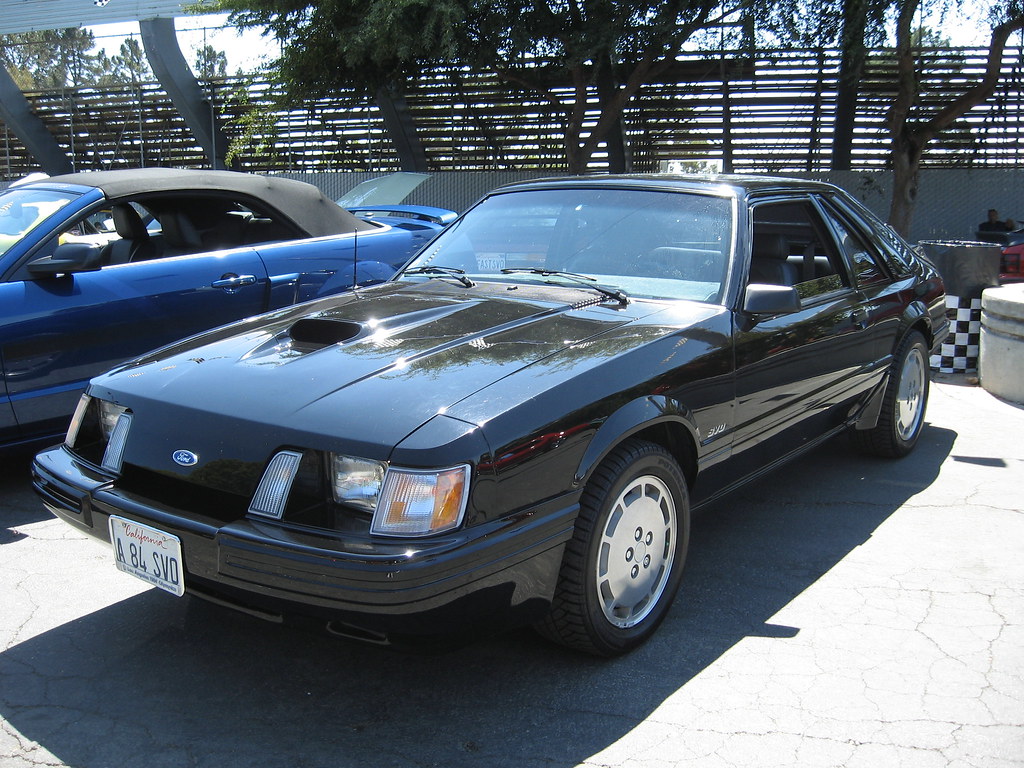
7. **Ford Mustang SVO**Let’s talk about the Ford Mustang SVO, a car that perhaps didn’t scream “supercar” in the same breath as a Ferrari, but delivered a surprisingly sophisticated, track-focused experience for the Blue Oval faithful. This wasn’t your average V8-powered pony car; it was a distinctive, turbocharged anomaly from the mid-80s, an experiment in European-style performance for the American market. Produced in relatively limited numbers, the SVO stands out as a true connoisseur’s Mustang, a testament to Ford’s willingness to innovate beyond its traditional muscle car formula.
Its rarity is, without question, a major catalyst for its escalating value today. With only about 9,000 units ever produced between 1984 and 1986, finding a clean, unmolested SVO is becoming increasingly difficult. What collectors really crave are those well-preserved examples with genuinely low mileage, cars that have escaped the ravages of time, modification, or neglect. These prime examples command significant premiums, as buyers are eager to own a piece of this unique, short-lived chapter in Mustang history.
The SVO’s performance, especially for its era and against its domestic stablemates, was truly something to behold. Under the hood sat a turbocharged 2.3-liter four-cylinder engine, a power unit that delivered quick, torquey acceleration and surprised many with its capabilities. But the SVO wasn’t just about straight-line speed; its comprehensive upgrades, including a revamped suspension system and four-wheel disc brakes, transformed it into a surprisingly agile and capable handler. This delicate balance of turbo power and genuinely sharp dynamics makes it a highly appealing package for collectors who appreciate a more refined driving experience.
Visually, the SVO didn’t just blend in with the rest of the Fox Body crowd; it purposely carved out its own aesthetic niche. It boasted a unique, aerodynamic front end, sleek blacked-out trim, and a distinctive bi-plane spoiler that immediately set it apart. These design elements weren’t just for show; they contributed to its improved aerodynamics and gave it a more purposeful, European-inspired look. Decades later, this distinctive styling has proven to be remarkably enduring, adding considerably to the car’s allure in the collector market as a prime example of thoughtful 80s American performance design.
Furthermore, the technological features packed into the SVO were genuinely ahead of their time for a Mustang. Beyond the turbo engine, it included an advanced suspension with adjustable Koni shocks, a limited-slip differential, and the aforementioned four-wheel disc brakes – features typically reserved for more exotic machinery. Enthusiasts and serious collectors today appreciate these engineering details, recognizing them as key differentiators that elevate the SVO beyond mere muscle car status into a more sophisticated realm of performance, solidifying its place as a truly unique and valuable 1980s automotive gem.
Car Model Information: 2023 Dodge Charger GT
Name: Ford Mustang SVO
Manufacturer: Ford Motor Company
Production: 1984–1986
BodyStyle: liftback
Platform: Ford Fox platform
Layout: FR layout
Assembly: Dearborn Assembly Plant,Dearborn, Michigan
Successor: Ford Mustang SVT Cobra
Wheelbase: 100.5 in
Abbr: on
Length: 181.0 in
Width: 69.1 in
Height: 51.9 in
Weight: cvt
Related: ubl
Engine: Ford Pinto engine#LL23,Straight-4,Turbocharger
Transmission: BorgWarner T-5 transmission,manual transmission
Caption: 1986 Mustang SVO
Categories: All articles with unsourced statements, Articles with short description, Articles with unsourced statements from July 2024, Articles with unsourced statements from May 2020, Commons category link is on Wikidata
Summary: The Mustang SVO is a limited-production version of the third generation Ford Mustang sold from 1984 to 1986, with fewer than 10,000 built. SVO is an acronym referring to Special Vehicle Operations, Ford Motor Company’s racing division formed in 1980 to oversee all motorsports operations, distribute performance parts developed in racing programs, and develop high-performance production vehicles derived from motorsports technologies. Although it departed both physically and mechanically from any prior version of the Mustang, it held the same spot within the lineup, both in terms of performance over “lesser” variants and in prestige, as had variants such as the Shelby-tuned and “BOSS” Mustangs of the 1960s and 1970s.
Get more information about: Ford Mustang SVO
Buying a high-performing used car >>>
Brand: Ford Model: Mustang SVO
Price: $26,690 Mileage: 19,257 mi.
Read more about: Director’s Cut: 13 Concept Cars That Embody Steven Spielberg’s Visionary Future

8. **Mercedes-Benz 190E 2.3-16**Now, for something entirely different but equally captivating: the Mercedes-Benz 190E 2.3-16. This isn’t just a luxury sedan; it’s a homologation special, a performance beast born from a legendary collaboration with Cosworth. Introduced in the 1980s, this car wasn’t merely meant to ferry executives in comfort; it was engineered to dominate touring car racing circuits. Today, it stands as a highly desirable classic, a testament to Mercedes-Benz’s prowess in blending motorsport DNA with understated, Teutonic elegance.
Rarity, unsurprisingly, is a key ingredient in its escalating collectibility. While Mercedes-Benz did produce a decent number, the limited-production 190E 2.3-16 models, especially those with low mileage and meticulous originality, are fervently sought after. The scarcity of truly prime examples ensures a robust demand among enthusiasts and serious collectors who understand its unique place in automotive history. These aren’t just cars; they’re rare, high-performance artifacts.
The engineering excellence within the 2.3-16 is truly the bedrock of its enduring value. Its heart is a Cosworth-developed 16-valve engine, a masterpiece of German-British collaboration that delivered astonishing performance while maintaining that legendary Mercedes-Benz reliability. Every aspect, from its finely tuned suspension to its precise chassis and uprated braking systems, was meticulously engineered for superior handling and a performance edge that feels incredibly potent, even by today’s standards. This is a machine built for driving, not just admiring.
Visually, the 190E 2.3-16 maintains that classic, understated Mercedes sedan silhouette, but with subtle, purposeful enhancements that hint at its sporting intent. The integrated aerodynamic body kit, slightly wider fenders, and unique badging contribute to an aggressive yet sophisticated appearance. This design language has aged with remarkable grace, avoiding the gaudy excesses of some 80s performance cars, making it consistently appreciated by collectors who value both performance and timeless style.
Its racing heritage provides an indispensable layer of desirability. The 190E 2.3-16 wasn’t just a pretty face; it competed with immense success in touring car championships across the globe, cementing its historical significance and prestige. This direct lineage to motorsport glory resonates deeply with enthusiasts, who value the tangible connection between these street-legal legends and their fiercely competitive, track-devouring counterparts. Owning one is owning a piece of a storied racing legacy.
For the serious collector, originality and comprehensive documentation are absolutely paramount, directly translating into increased market value. Cars boasting a thoroughly verified service history, matching numbers for their critical components, and factory-correct features command premium prices. Well-maintained, unmolested examples continue to appreciate, demonstrating that meticulously engineered 1980s vehicles, especially those with such a strong motorsport pedigree, are truly appreciating assets.
Read more about: Driving Legends: The 12 Most Successful Mercedes-Benz Models Shaping Automotive History
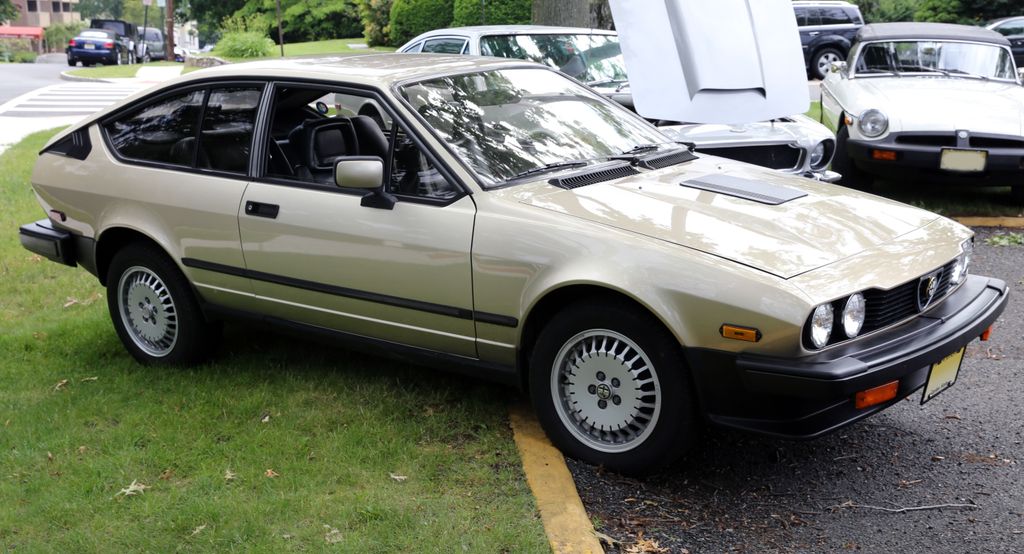
9. **Alfa Romeo GTV6**From Stuttgart, we swing south to Italy for a taste of pure passion: the Alfa Romeo GTV6. This 1980s sports coupe is more than just a car; it’s an experience, celebrated for its absolutely glorious V6 engine and a chassis that begged to be driven hard. It’s a car that wears its heart on its sleeve, exuding a distinctive character that has made it increasingly valuable among collectors seeking that elusive blend of classic European performance and undeniable Italian flair.
Rarity is undoubtedly a significant driver of its value. The GTV6 was produced in relatively limited numbers, and finding surviving examples in genuinely good, rust-free condition is becoming a real challenge. As a result, well-maintained cars, particularly those that retain their original paint and pristine interiors, attract increasingly higher prices in today’s fiercely competitive collector market. These are cars that require dedication, but reward in spades.
Performance, for its time, was absolutely central to its enduring appeal. The legendary 2.5-liter ‘Busso’ V6 engine is arguably one of the greatest engines ever produced, delivering a smooth yet spirited power band and an exhaust note that can only be described as operatic. Coupled with a lightweight transaxle chassis that provided near-perfect weight distribution and wonderfully precise steering, the GTV6 remains an incredibly engaging and immensely rewarding car to drive, even decades after its birth. It’s a car that truly involves you.
The styling of the GTV6 is quintessential 1980s Italian design, a bold statement that has truly stood the test of time. Its iconic wedge shape, those angular lines, and the distinctive front grille come together to create a visual identity that is both aggressive and elegant. Enthusiasts today value the GTV6’s aesthetics as much as its mechanical prowess, ensuring its ongoing desirability as a piece of automotive art. It’s a design that screams Alfa, and we love it for that.
Beyond mere numbers, the GTV6 offers a mechanical character that is increasingly rare and highly appreciated. The immediacy of its handling, the eager responsiveness of that V6, and the deeply analog driving feel are cherished by collectors who crave a vintage, unfiltered driving experience. These intrinsic qualities differentiate it from many contemporary cars, making it a unique and compelling proposition for anyone who truly loves to connect with the road.
For the most discerning collectors, originality and documented provenance are key factors that significantly enhance its market value. Vehicles with meticulously documented maintenance histories, matching numbers for their crucial components, and beautifully preserved interiors are highly preferred. Cars that retain these authentic attributes command premium prices at both auctions and private sales, as they represent the purest expression of the GTV6’s magnificent legacy.
Car Model Information: 2023 Dodge Charger GT
Name: Alfa Romeo Alfetta
Caption: 1978 Alfa Romeo Alfetta GTV 2.0
Manufacturer: Alfa Romeo
Production: 1972–1987
Assembly: Arese,Rosslyn, Gauteng
BodyStyle: Sedan (automobile)
Layout: Front-engine, rear-wheel-drive layout
Related: Alfa Romeo Giulietta (116),Alfa Romeo Alfa 6,Alfa Romeo 90
Categories: 1980s cars, Alfa Romeo vehicles, Articles with short description, CS1 Dutch-language sources (nl), CS1 French-language sources (fr)
Summary: The Alfa Romeo Alfetta (Type 116) is a front-engine, five-passenger saloon and fastback coupé manufactured and marketed by Italian automaker Alfa Romeo from 1972 to 1987 with a total of over 400,000 units produced during its production run.
The Alfetta was noted for the rear position of its transaxle (clutch and transmission) and its De Dion tube rear suspension — an arrangement designed to optimize handling by balancing front/rear weight distribution, as well as maintaining a low polar moment of inertia and low center of gravity. The interior of Coupé models featured a then unusual central tachometer placement — by itself, directly in front of the driver.
The Alfetta name, which means “little Alfa” in Italian is derived from the nickname of the Alfa Romeo Alfetta (Tipo 159), a successful Formula One car which in its last iteration introduced in 1951, paired a transaxle layout to De Dion tube rear suspension — like its modern namesake.
Get more information about: Alfa Romeo Alfetta
Buying a high-performing used car >>>
Brand: Alfa Romeo Model: GTV6
Price: $26,690 Mileage: 19,257 mi.
Read more about: Recall These? The Ultimate Showdown: 12 Coupes That Went From Hot to Humiliating in the Great American vs. European Car Wars
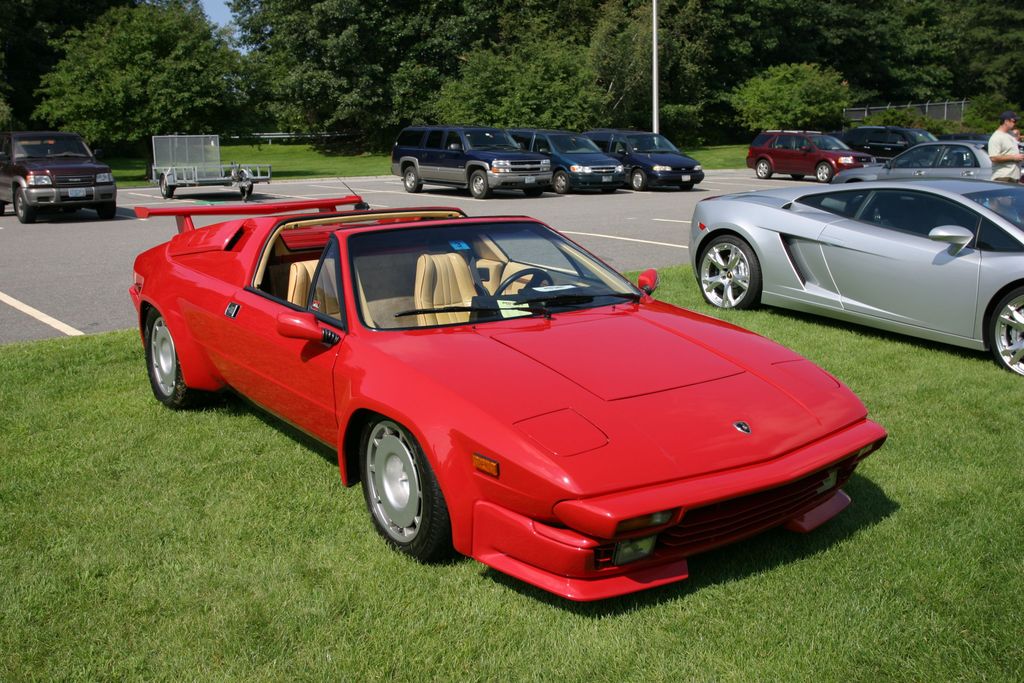
10. **Lamborghini Jalpa**Next up, we have the younger, perhaps less flamboyant, but equally compelling sibling to the Countach: the Lamborghini Jalpa. This 1980s V8-powered sports car was Sant’Agata’s audacious attempt to create a more “accessible” (if any Lamborghini can be called that) supercar, a machine that still delivered thrilling performance and head-turning looks. Today, it’s a prized gem among collectors, revered for its unique styling, remarkably limited production numbers, and its undeniable performance heritage within the storied Lamborghini lineage.
Rarity, as is often the case with these Italian exotics, is a paramount factor driving its impressive value. With only about 400 units ever built during its production run, finding a well-preserved example of a Jalpa is an increasingly rare feat. The market significantly rewards low-mileage cars, particularly those that boast their original factory paint and impeccably maintained interiors. These pristine examples consistently attract premium prices, signifying a profound appreciation for its scarcity and historical importance.
Performance, though perhaps not as extreme as the V12 Countach, was nevertheless notable and exhilarating for its time. The Jalpa’s 3.5-liter V8 engine produced a healthy amount of power, enabling spirited acceleration and a truly thrilling driving experience that felt distinctly Lamborghini. Coupled with a relatively lightweight chassis, the Jalpa offered an engaging and surprisingly nimble ride that remains thoroughly enjoyable today, proving that V8s can sing just as beautifully as V12s.
The styling of the Jalpa is undeniably distinctive, characterized by those sharp, angular lines, the iconic pop-up headlights, and unmistakably wedge-shaped proportions that scream 1980s Italian sports car. Its bold and purposeful design, a clear evolution of the Urraco, has aged remarkably well. It continues to attract considerable attention from both enthusiasts and serious collectors, who see it as a captivating example of a bygone era of dramatic, uncompromising automotive artistry.
Furthermore, its unique engineering and raw mechanical character add immensely to its appeal. The manual transmission, combined with responsive handling and an inherently analog driving experience, distinctly differentiates the Jalpa from more clinical, modern supercars. Collectors who cherish this visceral connection to the road, this pure, unadulterated driving enjoyment, find the Jalpa to be an almost irresistible proposition. It’s a physical, engaging machine in a digital world.
For those committed to preserving automotive history, originality and comprehensive documentation are absolutely essential criteria that significantly influence its market value. Vehicles that retain their factory specifications, boast thoroughly verified service records, and feature perfectly preserved interiors consistently command the highest prices. Collectors rightly prioritize cars that uphold their authenticity and historical accuracy, ensuring the Jalpa’s legacy as a true 80s icon.
Read more about: Inside Vanilla Ice’s Garage: A Deep Dive into the Rapper’s Eclectic and Multi-Million Dollar Automotive Collection
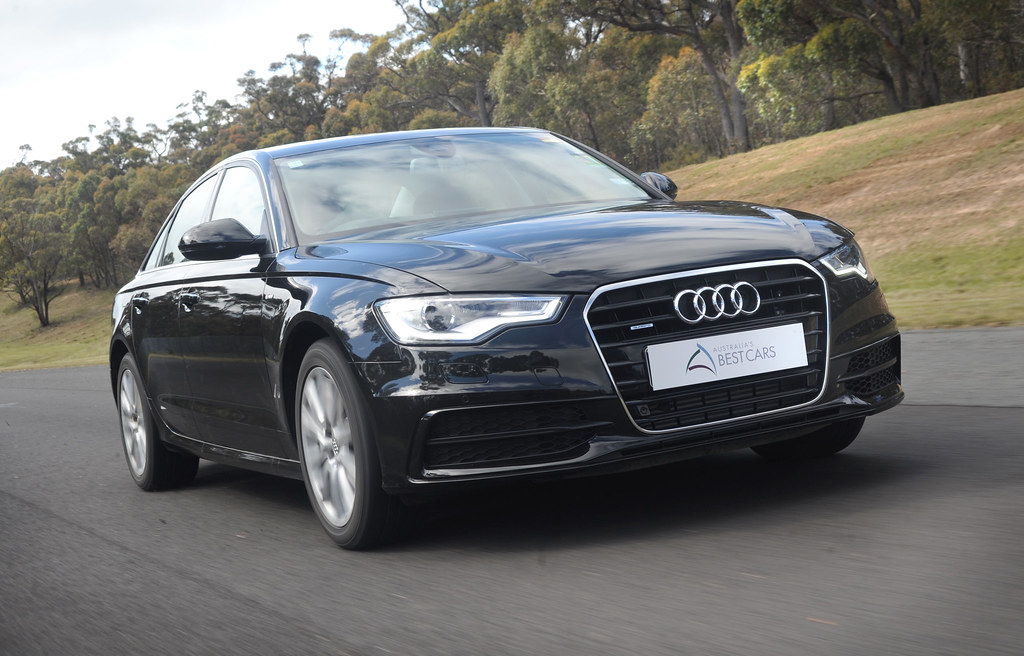
11. **Audi Quattro**From Italian drama, we pivot to German ingenuity with the legendary Audi Quattro, a car that didn’t just compete in the 1980s; it utterly revolutionized the performance car landscape. Introduced with its groundbreaking all-wheel-drive system and rally-inspired technology, the Quattro didn’t just win races; it redefined what was possible on tarmac and gravel alike. Today, it stands as an immensely collectible classic, highly prized for its rarity, its game-changing performance, and its unparalleled motorsport legacy.
Rarity plays a crucial role in enhancing its significant value. While not ultra-limited, specific Quattro models, particularly the early, purer versions and the coveted Sport Quattro trims, are incredibly sought after by discerning collectors. The market places a high premium on well-preserved examples that retain their original paint and pristine interiors, seeing them as vital pieces of automotive history. These are cars that represent a paradigm shift, and their scarcity only amplifies their allure.
Performance was nothing short of groundbreaking, fundamentally altering the competitive landscape. The turbocharged inline-five engine, a symphony of mechanical engineering, combined with Audi’s revolutionary permanent all-wheel-drive system, provided truly astonishing acceleration and handling. This unique blend allowed it to utterly dominate rally competitions, making it a force to be reckoned with. Collectors today deeply value this fusion of cutting-edge technology and brutal, effective performance.
Styling-wise, the Quattro is instantly recognizable, an iconic representation of 1980s European sports car aesthetics. Its distinctive boxy design, those purposefully flared fenders, and its aggressive, planted stance all contribute to a visual identity that is both functional and unmistakably powerful. Crucially, this bold and muscular look has aged with incredible grace, ensuring its enduring appeal and solidifying its status as a highly desirable classic in any collection.
Its motorsport heritage, of course, is a colossal factor in its desirability. The Quattro’s spectacular success in the World Rally Championships wasn’t just a series of victories; it was a legend in the making, creating a fervent global following and significantly enhancing its historical significance and market demand. Enthusiasts are drawn to its direct, tangible connection to a golden age of rallying, seeing it as a symbol of technological triumph and raw sporting prowess.
For serious buyers, originality is absolutely essential. Cars boasting matching numbers across their chassis and powertrain, supported by meticulously documented service histories, and featuring perfectly preserved interiors, command the highest valuations. Collectors rightfully prioritize authenticity when evaluating Quattro models, recognizing that an unmolested example is a direct link to its pivotal moment in automotive history. Furthermore, those revolutionary technological innovations, particularly the all-wheel-drive system itself, are profoundly admired by modern collectors who appreciate the engineering genius behind its unparalleled performance.
Car Model Information: 2021 Audi Q8 55 Premium Plus
Name: Audi Quattro B2 (85)
Manufacturer: Audi
Aka: Ur-Quattro
Production: 1980–1991,11,452 produced
Assembly: Ingolstadt
Designer: Jörg Bensinger,Walter Treser,Ferdinand Piëch,Franz Tengler (transmission),Martin Smith (designer)
Class: Mid-size car,rallying
BodyStyle: coupé
Platform: Volkswagen B platform#B2
Related: Audi 80#B2
Layout: longitudinal engine,Front-engine, four-wheel-drive layout,all-wheel drive
Engine: SOHC,2.2 L SOHC 10v I5 (turbo) (1987–1989),DOHC
Transmission: manual transmission
Wheelbase: 2524 mm
Abbr: on
Length: 4404 mm
Width: 1722 mm
Height: 1346 mm
Weight: 1290 kg
Sp: uk
Predecessor: Audi 100 Coupé S
Successor: Audi S2
Categories: 1990s cars, All-wheel-drive vehicles, Articles with hAudio microformats, Articles with short description, Audi racing cars
Summary: The Audi Quattro is a road and rally car, produced by the German automobile manufacturer Audi, part of the Volkswagen Group. It was first shown at the 1980 Geneva Motor Show on 3 March. Production continued through 1991.
Get more information about: Audi Quattro
Buying a high-performing used car >>>
Brand: Audi Model: Quattro
Price: $39,965 Mileage: 41,673 mi.
Read more about: Are You Driving a ‘Show-Off’ Vehicle? The Top 10 Car Brands Prone to Speeding Tickets
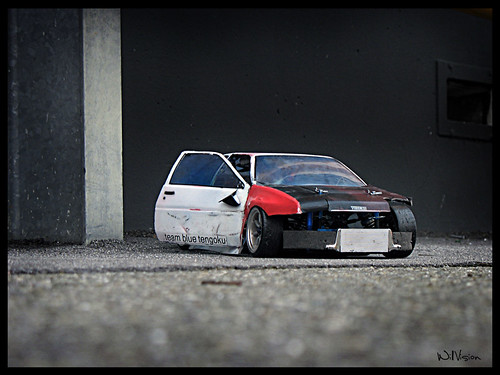
12. **Toyota AE86**And finally, we arrive at a car that might seem, on the surface, a humble compact coupe, but has achieved an almost mythical status among enthusiasts: the Toyota AE86. Part of the venerable Corolla range, this lightweight, rear-wheel-drive machine isn’t about brute force; it’s about balance, handling purity, and an undeniable simplicity that has propelled it into the pantheon of highly collectible 1980s cars. It’s proof that sometimes, less truly is more, especially when it comes to driving enjoyment.
Rarity, perhaps surprisingly for a Corolla variant, is now a significant driver of demand. While many AE86s were produced, finding truly well-maintained, rust-free, and crucially, unmolested, low-mileage examples is an increasingly difficult quest. The market rewards this scarcity, with buyers willing to pay substantial premium prices for original models that haven’t been modified or driven into the ground, a common fate for many of its peers.
The AE86’s performance and handling are absolutely central to its legendary appeal. Its lightweight chassis, combined with an almost perfect 50/50 weight distribution and a responsive 1.6-liter engine, created a dynamic package that was, and still is, an absolute joy to drive. Its profound connection to motorsports, particularly the burgeoning sport of drifting, as well as club racing and grassroots motorsports, adds immeasurably to its desirability and cult status. It’s a car that taught a generation how to drive.
Styling-wise, the AE86 is a classic representation of 1980s Japanese automotive design. Its compact coupe form factor, clean, simple lines, and those iconic pop-up headlights create an aesthetic that is both functional and deeply nostalgic. Enthusiasts appreciate its timeless, almost minimalist, approach to design, seeing it as a pure expression of driving intent rather than overt flashiness. It’s a design that’s aged with dignity.
However, it’s the cultural significance that truly amplifies the AE86’s value to stratospheric levels. Featured prominently in motorsports, entrenched in street racing culture, and immortalized in popular media like the *Initial D* manga and anime series, the AE86 has become a global symbol of driving purity, accessible performance, and grassroots heroics. This enduring cultural connection sustains fierce demand among collectors and enthusiasts worldwide, transforming a practical car into a cultural icon.
For serious collectors, originality matters immensely. Vehicles that boast their factory paint, retain matching numbers for critical components, and come with a thoroughly verified maintenance history command the highest prices. While the AE86 is often modified, a pristine, unmodified example is the holy grail, making preserved cars incredibly sought after as true representations of this unassuming legend. The Toyota AE86 unequivocally demonstrates how a combination of lightweight design, engaging performance, growing rarity, and unparalleled cultural impact can elevate a seemingly ordinary 1980s compact coupe into a profoundly desirable and valuable classic car.
### Lavish Garages: When Rockstars Meet the Road’s Rarest Gems
It’s clear that the 1980s produced some truly unforgettable automotive masterpieces, machines that have only grown in stature and value over the decades. But who, beyond the average enthusiast or discerning collector, has the means and the passion to acquire these rolling monuments to speed and style? Well, if there’s one group renowned for their extravagant lifestyles and impeccable taste, it’s famous musicians. Their garages often house collections that are as diverse and captivating as their discographies, featuring everything from million-dollar classics to cutting-edge hypercars. Let’s pull back the velvet rope and take a compelling look at what some of the biggest names in music are parking behind their lavish gates.
**Jay Kay: The King of Cool Classics**
Jamiroquai frontman Jay Kay isn’t just a musician; he’s a certified petrolhead with a car collection that could rival a prestigious automotive museum. His discerning eye for rare and unique vehicles has led him to acquire some of the finest machines ever built. Among his highlights are the stunning 1970s Italian masterpiece, the Lamborghini Miura SV, which perfectly blends art and engineering. He also boasts a Ferrari LaFerrari, a hybrid hypercar that exemplifies performance and exclusivity, along with the quintessential British icon, an Aston Martin DB5, famously linked to James Bond. Jay Kay even owns a Gordon Murray Automotive T50, a modern marvel destined for iconic status. His garage is a testament to his appreciation for automotive artistry, seamlessly mixing old-school charm with cutting-edge innovation.
**Nick Mason: From Drumming to Driving Legends**
Pink Floyd drummer Nick Mason is another figure whose passion for high-performance machines, particularly Ferraris, is legendary. A lifelong aficionado of all things automotive, Mason’s collection features some of the most sought-after vehicles globally. At the pinnacle of his collection stands the Ferrari 250 GTO, arguably the crown jewel of classic Ferraris, a car whose value consistently breaks auction records. He also cherishes a McLaren F1 GTR, a racing legend with truly breathtaking performance, and a Bugatti Type 35, a vintage racer dripping in heritage and style. Mason’s dedication to motoring extends beyond mere ownership; he actively participates in events like the Goodwood Festival of Speed, where he personally drives his priceless cars for adoring crowds, sharing his passion with the world.
**Adele: Understated Elegance in the Fast Lane**
While Adele is renowned for her soulful ballads and powerful voice, her taste in cars reflects a more understated, yet undeniably elegant, approach. She’s famously private and not one to overtly flaunt her immense wealth, but her car choices speak volumes about her refined preferences. Among her vehicles, you’d find a practical yet stylish Volkswagen Golf, perfect for everyday discretion. For longer journeys or a touch more luxury, she opts for a Bentley Continental GT, a luxurious grand tourer that offers both comfort and effortless performance. Her choices are a reflection of her grounded personality, quietly nodding to her colossal success with vehicles that exude timeless class rather than overt ostentation.
**Eric Clapton: Striking the Right Chord with Ferrari**
Eric Clapton’s profound love affair with Ferrari is an open secret within both the music and automotive worlds. The legendary guitarist’s devotion runs so deep that he was granted the rare privilege of working directly with Ferrari to create a one-off bespoke car, a monumental honor reserved for only the most elite and passionate clientele. His key cars include the truly unique Ferrari SP12 EC, a custom-built model directly inspired by the iconic Ferrari 512 BB, showcasing a deep personal connection to the brand’s heritage. He also owns a Ferrari Enzo, a supercar as iconic and revered as its namesake founder, and a Ferrari 599 GTB Fiorano, which perfectly combines glorious V12 power with sophisticated elegance. Clapton’s collection underscores a deep appreciation for the Prancing Horse and a desire to own tangible pieces of its unparalleled automotive history.
**Brian May: A Rock Legend with a Classic Touch**
Queen guitarist Brian May, a true rock icon, may not display the same level of flashiness as some of his musical contemporaries, but his taste in cars is no less impressive. His profound love for classic vehicles aligns perfectly with his thoughtful, intellectual, and creative persona. Among Brian May’s notable cars are a Jaguar XJS, a quintessential British grand tourer that offers a blend of comfort and sporting ability. For the ultimate in luxury and comfort, he also possesses a Rolls-Royce Phantom, the definitive symbol of opulent motoring. May’s curated collection reflects an understated yet profoundly sophisticated approach to motoring, favoring timeless design and refined engineering over fleeting trends.
**Rod Stewart: Forever Young with Fast Cars**
Rod Stewart’s car collection is, much like his enduring stage presence, delightfully flamboyant and bursting with energy. Over his illustrious career, the rock star has owned an array of high-end, high-performance cars, each one a clear expression of his enduring love for speed, style, and making a statement. His impressive collection includes a Lamborghini Aventador, a modern supercar known for its dramatic, aggressive looks and earth-shattering performance. He also counts among his treasures a Porsche Carrera GT, a truly rare gem among Porsche enthusiasts, revered for its pure driving experience and motorsport pedigree. Additionally, a Ferrari F12 Berlinetta graces his garage, offering an intoxicating blend of V12 power and sublime Italian elegance. Stewart’s cars perfectly mirror his larger-than-life persona, ensuring he commands attention wherever he rolls.
**Jeff Beck: A Guitar God with a Need for Speed**
The late, great Jeff Beck was not only a virtuoso on the guitar, pushing the boundaries of what the instrument could do, but also a deeply passionate and keen car collector. His automotive interests extended beyond mere ownership, as he frequently delved into the meticulous restoration of vintage vehicles, adding his personal, artistic touch to each mechanical masterpiece. Among Jeff Beck’s automotive highlights were a formidable Hot Rod Ford Coupe, a magnificent nod to classic American muscle and the artistry of custom craftsmanship. He also treasured a Chevrolet Corvette, a timeless classic in the world of sports cars, embodying raw power and enduring appeal. Beck’s profound love for cars was truly an extension of his creative spirit, a harmonious blend of art, engineering, and the exhilaration of speed.
**Elton John: Glamour Meets the Open Road**
Sir Elton John’s legendary flamboyance is certainly not confined to his iconic outfits and captivating stage performances. His magnificent garage features an array of luxurious and distinctive cars, each possessing its own unique flair and reflecting his dazzling personality. Elton John’s collection proudly features a Rolls-Royce Phantom VI, a vehicle truly fit for royalty, embodying the pinnacle of British luxury and grandeur. He also possesses an Aston Martin V8 Vantage, a quintessential British classic renowned for its raw power and muscular aesthetics. Additionally, a Bentley Turbo R graces his collection, offering a superb mix of commanding luxury and formidable performance. John’s cars are as dazzling and show-stopping as his personality, making an unforgettable statement wherever they choose to cruise.
**Brian Johnson: AC/DC’s Lead Man, a True Gearhead**
Brian Johnson, the unmistakable frontman of the legendary hard rock juggernaut AC/DC, is almost as much at home on a racetrack as he is belting out anthems on stage. Johnson’s impressive garage at his Florida home, shared with his second wife Brenda, is a fascinating cross-section of automotive desire, ranging from the ultimate in luxury to quirky classics. His collection includes everything from a stately Rolls-Royce Phantom to a charming, iconic classic Citroën DS23 Pallas. Among his most prized possessions are an Audi R8, a modern supercar known for its blistering performance and stunning design, and a ferocious 670-horsepower Richard Petty Edition Ford Mustang GT, a true American muscle machine. He also owns a luxurious Bentley Continental GT S, alongside venerated classic cars such as an MG TF and a magnificent 1928 Le Mans-bodied Bentley 4.5-litre, affectionately nicknamed “Thunder Guts.” Johnson’s eclectic collection perfectly showcases a deep, lifelong passion for all things automotive.
**Guy Berryman: Coldplay’s Bass Guitarist’s Incredible Collection**
Meet Guy Berryman, Coldplay’s bass player, who is not just a musical talent but also a deeply passionate petrolhead with an undeniable fascination for supercars, particularly those from the golden era of the 1960s. From the staggering speed of a Bugatti Veyron to the exquisite lines of a Porsche Zagato Speedster, Guy’s collection of unique and rare classic cars is, without exaggeration, one of the most impressive in the world. Some true standouts from this amazing collection include the iconic Bugatti Veyron, which at one point held the title of the fastest car on the planet. He also cherishes a Porsche 914/6, a variant that famously featured the 2.0 L air-cooled Type 901/3 flat-six engine from the 1967–1969 911T model, a true driver’s car. The sheer beauty of his Porsche 356 Zagato is undeniable, a masterpiece of design. Perhaps one of his personal favorites, and certainly ours, is the Bizzarrini 5300 GT Strada, a car of stunning elegance and power. And, of course, no serious collection is complete without a Porsche 911, a supercar icon in its own right. Berryman’s garage is a treasure trove, reflecting a profound love for automotive heritage and unparalleled design.
**Paul McCartney: The Quiet Beatle’s Tasteful Collection**
Paul McCartney, often referred to as ‘the Quiet Beatle,’ has a car collection that perfectly mirrors his understated yet undeniably refined personality. Throughout his long and illustrious life, the legendary musician has owned a thoughtful mix of practical vehicles and prestigious classics. Among Paul McCartney’s cars, you’d find an Aston Martin DB6, a quintessential British classic that embodies elegance, power, and timeless design. For a more contemporary and environmentally conscious choice, he also possesses a Lexus LS600h, a luxurious hybrid saloon that speaks to both comfort and sustainability. McCartney’s choices highlight a sophisticated blend of classic charm, modern luxury, and a quiet nod to environmental responsibility, proving that great taste transcends eras.
**Keith Richards: Rolling Stones, Rolling Wheels**
Keith Richards, the legendary guitarist of the Rolling Stones, is famously known for his wild and adventurous lifestyle. However, a deeper look reveals that his taste in cars is surprisingly sophisticated, with a collection that perfectly captures the rebellious spirit of rock ‘n’ roll while also appreciating timeless class. Keith Richards’ cars include a stunning Ferrari Dino 246 GT, a beautiful mid-engine sports car celebrated for its exquisite lines and engaging driving experience. He also owns a magnificent Bentley S3 Continental Flying Spur, a classic British grand tourer that oozes timeless elegance and understated power. Richards’ car choices brilliantly balance his famously rebellious energy with an undeniable appreciation for classic style and automotive heritage, proving that a true rock and roller can still have impeccable taste.
Read more about: Are You Driving a ‘Show-Off’ Vehicle? The Top 10 Car Brands Prone to Speeding Tickets
As we bring this deep dive into the 1980s automotive legends and the extraordinary collections of these iconic musicians to a close, it’s abundantly clear that the allure of these machines is multifaceted. Whether it’s the groundbreaking engineering of a homologation special, the timeless aesthetics of an Italian exotic, or the sheer cultural resonance that turns a car into a legend, these vehicles transcend mere transportation. They are tangible pieces of history, passion, and artistry. And when you combine that with the unique personalities of musicians who have shaped our cultural landscape, you get a symphony of style and speed that continues to inspire. So, what 1980s classic would you add to your dream garage? The conversation never truly ends when it comes to these rolling masterpieces.



